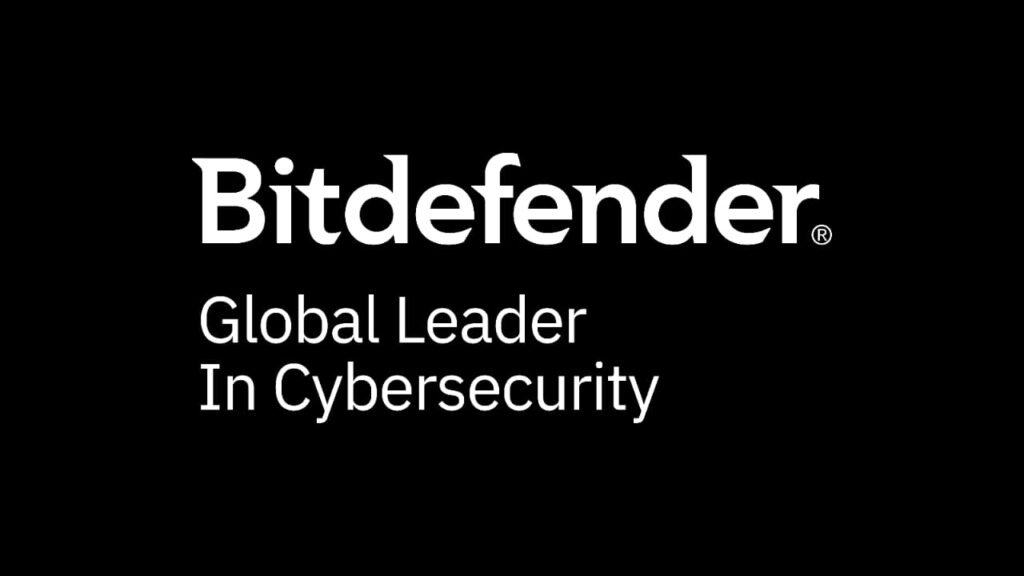Level Up Your Email Defense: Essential 2024 Security Strategies
Introduction:
Our inboxes have become digital vaults, storing financial records, personal documents, and even login credentials. This treasure trove, unfortunately, attracts unwanted attention from cybercriminals. A single compromised email account can be a disaster, leading to financial loss, identity theft, and even damage to your professional reputation. Securing your email is no longer optional – it’s essential. This guide will equip you with the knowledge and tools you need to build a strong defense for your email and safeguard your valuable information.
Fundamentals: Building Uncrackable Passwords with Password Managers
Strong passwords are the cornerstone of email security, making it significantly harder for hackers to breach your inbox and steal your personal information.
- Create Unbreakable Passwords: Strong passwords combine uppercase and lowercase letters, numbers, and symbols, making them exponentially more difficult to crack.
- Avoid Domino Effect: Reusing passwords creates a single point of failure. If hackers breach one account with your reused credentials, they can attempt access to other accounts, potentially causing significant damage.
-
Creating Unbreakable Password:
- Length Matters: Strive for at least 15 characters for maximum security.
- Use Random Characters: Employ Uppercase, Lowercase, Numbers, and Symbols
- Dodge the Obvious: Steer Clear of Dictionary Words & Personal Info.
- Don’t Share: Keep Passwords Confidential, Avoid Sharing
Conquer Password Chaos: The Power of Password Managers
Let’s be honest, juggling unique, complex passwords for every account is a nightmare. Enter password managers: your key to online security and convenience.
- Fort Knox for Logins:Password managers store your passwords in an encrypted vault, secured by a master password you create. Think of it as a virtual safe, only accessible with your own key.
- Auto-fillGenius: They can magically fill in your login details on websites and apps, saving you time and endless typing. No more struggling to remember that complicated password you created!
- Random Strong Password Generator:Many password managers can generate strong, random passwords for you. Ditch the guesswork and let the tool create uncrackable combinations.
Popular Password Managers to Consider:
- 1Password
- LastPass
- Dashlane
- Bitwarden (Open-source option)
Master Password Matters: Even with a password manager, remember, a strong master password is critical to safeguard your entire vault. This is the key that unlocks all your other passwords, so make it a tough one to crack!
Double Down on Email Security: Introducing Multi-Factor Authentication (MFA)
Even the strongest password isn’t foolproof. That’s where Multi-Factor Authentication (MFA) comes in, acting as a security guard for your email login.
Think of it Like a Two-Lock Door
MFA works just like having two locks on your door – it adds an extra layer of defense. Besides your password (something you know), MFA requires a second factor to verify it’s really you trying to log in. This second factor could be:
- Something You Have:This could be a physical security key you carry, a smartphone app that generates unique codes, or a special security token.
- Something You Are:This uses your unique biological features like fingerprints, iris scans, or facial recognition.
Why MFA is Your Email Superhero
- Blocks Hackers Cold:Even if a hacker steals your password, they’d be shut out without the additional MFA code or biometric verification.
- Peace of Mind, Delivered:MFA adds a safety net, reducing the risk of unauthorized access and giving you peace of mind.
- Everywhere You Need It:Most email providers and online platforms offer MFA as an optional security feature – it’s like a security blanket you can take with you!
Turning on MFA for Your Email
The exact steps to enable MFA will vary depending on your email provider, but it’s generally a straightforward process. Here’s a basic idea:
- Log in to your email settings.
- Find the security section.
- Look for “Multi-Factor Authentication” or a similar option.
- Choose your preferred MFA method (app, key, etc.).
- Follow the on-screen instructions to complete the setup.
Remember: Once you enable MFA, logging in to your email will require both your password and the additional verification step. Think of it as an extra hurdle for anyone who shouldn’t be there!
Don't Get Hooked! Phishing Scams Exposed
Phishing scams are a cunning attempt by cybercriminals to steal your personal information. These emails can appear deceptively real, mimicking trusted sources like banks, social media, or even your boss. But fear not, we’ll equip you to spot them and stay safe!
Red Flags to Watch Out For:
- Time Pressure: Phishing emails love urgency. They might threaten to suspend your account if you don’t act “now” or lure you with limited-time offers. Don’t be rushed!
- Generic Greetings: Beware of impersonal greetings like “Dear Customer” instead of your actual name.
- Grammar Gone Wrong: Typos, bad grammar, and awkward phrasing are telltale signs of a scam.
- Suspicious Links & Attachments:Never click links or open attachments from strangers. Hover over the link to see the real URL – it might not match the displayed text.
- Unrealistic Requests: Legitimate companies won’t ask for sensitive information like passwords, credit card details, or Social Security numbers via email. Be wary of such requests!
Reel in Your Email Security:
- Double-Check the Sender: Always scrutinize the sender’s email address. Phishing emails often mimic real companies with slight variations (e.g., “rn” instead of “m”).
- Don’t Be Lured by Links: Resist clicking links or opening attachments in emails from unknown senders.
- Go Directly to the Source: If an email claims to be from a real company, log in to your account directly on their website (not using any links in the email) to verify its authenticity.
- Report Phishing Attempts: If you suspect a phishing email, report it to your email provider and consider forwarding it to anti-phishing organizations.
Remember: When in doubt, it’s always safer to delete suspicious emails. Don’t let them reel you in – avoid clicking links or opening attachments!
Email Encryption: Need-to-Know Security (Optional)
Strong passwords and MFA are email security powerhouses, but some users might want an extra layer of defense: email encryption.
What is Email Encryption?
Imagine sending a secret message! Standard email transmits messages like plain postcards – anyone who intercepts them can read them. Email encryption scrambles the message content, making it unreadable to anyone without the decryption key, like a secret code!
Types of Email Encryption:
- S/MIME (Secure/Multipurpose Internet Mail Extensions): A popular method where both sender and recipient need special digital certificates to encrypt and decrypt messages.
- PGP (Pretty Good Privacy):Another common option similar to S/MIME in functionality.
Things to Consider Before Encrypting:
- Tech Savvy Needed: Setting up and using email encryption can have a bit of a learning curve.
- Recipient Ready?: For your recipient to read your encrypted message, they’ll need compatible software or a decryption key.
- Extra Step, Extra Security: Email encryption might add an additional step to your email routine.
Is Encryption for You?
Email encryption offers top-notch security, but it might not be for everyone. If you handle highly sensitive information, encryption can be a valuable tool. However, for everyday emails, strong passwords, MFA, and good email habits are usually enough.
Level Up Your Email Security: A Guide to Provider Settings
Most email providers act as your digital fortress, but you hold the key to optimizing its defenses! While specific options may vary, this guide will help you navigate your email provider’s security settings.
Finding Your Security HQ:
- Login to your email account.
- Scout for the “Settings” or “Security” section. It might be hidden under a gear icon, account settings, or a dedicated security tab.
Security Settings Arsenal:
- Multi-Factor Authentication (MFA): Equip your account with MFA for an extra login verification step (refer to the previous section for details on MFA).
- Activity Alert Defenders: Activate notifications for suspicious activity like login attempts from unknown devices.
- Password Refresh Rate: Consider requiring regular password changes (every few months) to maintain strong password hygiene.
- App Access Patrol: Review and manage apps and devices with access to your email. Revoke access to any unauthorized ones.
- Spam & Phishing Filter Command Center: Fine-tune your spam and phishing filters to effectively catch unwanted emails.
Remember: These are just a few examples. Dive deeper into your email provider’s security settings to discover all the tools at your disposal!
Beyond the Basics: Exploring Secure Email Providers (Optional)
While this guide focuses on fortifying your email security regardless of provider, there are email services that prioritize user privacy and security. These providers often implement features like:
- End-to-End Encryption: This scrambles your emails, making them unreadable even by the email provider itself.
- Focus on Privacy: Secure email providers often have stricter data privacy policies and avoid monetizing user data through targeted advertising.
Choosing a Secure Email Provider:
- Research & Reviews: Before switching providers, research and read reviews of secure email services to find one that aligns with your needs.
- Consider Trade-offs: Some secure email providers might lack certain features or have a less user-friendly interface compared to mainstream options.
Remember: While secure email providers offer additional security measures, implementing the practices outlined in this guide can significantly enhance the security of your email, regardless of the provider you use.
Sharpen Your Email Security Skills: Everyday Habits for Champions
Securing your email is an ongoing quest, and strong passwords and MFA are your trusty sword and shield. But what else can you do to become a champion of email security? Here are some battle-tested habits to cultivate:
- Public Wi-Fi: Friend or Foe? Public Wi-Fi is a convenience, but a security risk for email access. Hackers can lurk in these networks. If you must use public Wi-Fi, a VPN acts like a suit of armor, encrypting your data for extra protection.
- Sharing with Care: Not Everything Belongs in Email Be mindful of the information you send via email. Sensitive data like credit card numbers, social security numbers, or passwords should be kept out of unencrypted emails. Think of them as top-secret documents!
- Software Shields Up! Keep your email software and operating system updated with the latest security patches. These updates are like shields, patching vulnerabilities that hackers might try to exploit.
- Beware of Download Dragons! Exercise caution when opening attachments or downloading files from unknown senders. Malicious software can disguise itself as attachments, so only download files you were expecting.
- Spot the Imposter! Be a vigilant lookout for suspicious activity in your email account. This could include strange login attempts (like someone trying to sneak into your account!), changes to your settings you didn’t make, or unusual outgoing emails you never sent. If you see something suspicious, report it to your email provider immediately and change your password – better safe than sorry!
- Backup Your Fortress! Consider backing up your important emails regularly. This ensures you have a copy of your data in case of unforeseen circumstances, like a digital disaster!
Remember: By following these best practices alongside the other security measures in this guide, you can significantly reduce the risk of email compromise and keep your valuable information safe.










